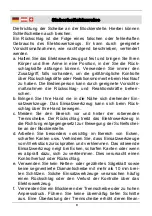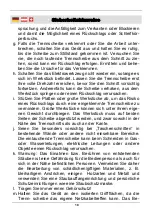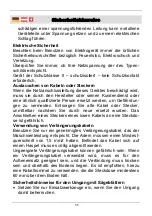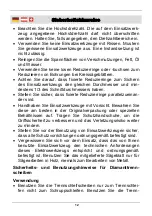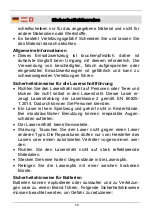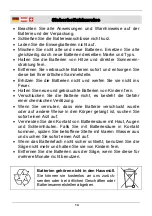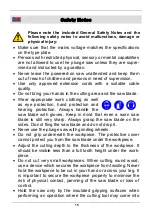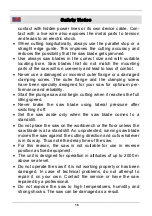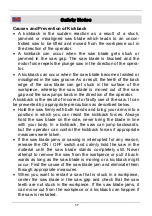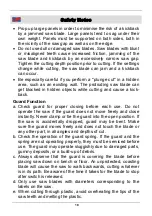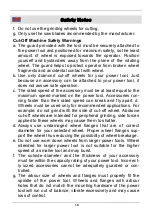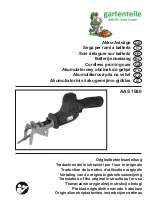
18
Safety Notes
Prop up large panels in order to minimise the risk of a kickback
by a jammed saw blade. Large panels tend to sag under their
own weight. Panels must be supported on both sides, both in
the vicinity of the saw gap as well as on the edge.
Do not use dull or damaged saw blades. Saw blades with blunt
or misaligned teeth cause increased friction, jamming of the
saw blade and kickback by an excessively narrow saw gap.
Tighten the cutting depth position prior to cutting. If the settings
change while cutting, the saw blade can jam and a kickback
can occur.
Be especially careful if you perform a "plunge cut" in a hidden
area, such as an existing wall. The protruding saw blade can
get blocked in hidden objects while cutting and cause a kick-
back.
Guard Function
a. Check guard for proper closing before each use. Do not
operate the saw if the guard does not move freely and close
instantly. Never clamp or tie the guard into the open position. If
the saw is accidentally dropped, guard may be bent. Make
sure the guard moves freely and does not touch the blade or
any other part, in all angles and depths of cut.
b. Check the operation of the guard spring. If the guard and the
spring are not operating properly, they must be serviced before
use. The guard may operate sluggishly due to damaged parts,
gummy deposits, or a build-up of debris.
c. Always observe that the guard is covering the blade before
placing saw down on bench or floor. An unprotected, coasting
blade will cause the saw to walk backwards, cutting whatever
is in its path. Be aware of the time it takes for the blade to stop
after switch is released.
d. Only use saw blades with diameters corresponding to the
labels on the saw.
e. When cutting through plastic, avoid overheating the tips of the
saw teeth and melting the plastic.






